The Art of Pixel Perfection: Visuals in Classic Platformers
10 March 2025
Let’s take a second to stroll down memory lane. Remember the days when you’d blow on a cartridge, pop it into your console, and get lost in brightly colored, pixelated worlds? Classic platformers were magic. With their tight controls, catchy soundtracks, and, of course, their unmistakable visual charm, they laid the foundation for some of gaming's most unforgettable adventures. But here’s the thing—those visuals? They weren’t just “good enough” for the time. They were an art form. The art of pixel perfection, to be precise.
Today, let’s dive into what made the visuals in classic platformers not just functional, but iconic. And hey, let’s get comfy while we’re at it—imagine we’re chatting over coffee, reminiscing about the golden era of gaming.![]()
What Makes Pixel Art… Well, Perfect?
Pixel art is more than a series of tiny squares slapped onto a screen. It’s a craft, a skill that requires precision, creativity, and a keen eye for detail. Think about it—every single pixel matters. There’s no room for fluff or filler when you’re working with a small grid of limited colors.In the world of platformers, pixel art wasn’t just a necessity; it was a frontier. Developers had to work within strict hardware limitations. No 4K textures or ray tracing here, folks. They had 8-bit and 16-bit palettes to bring their worlds to life. And yet, they managed to tug at our heartstrings, tell rich stories, and create characters we still cherish decades later. All with some teeny, tiny squares.![]()
The Importance of Vibrant Colors and Contrast
Let’s talk about color, shall we? Classic platformers practically shoved rainbows into our eyeballs, and we loved it. Why? Because the vibrant colors weren’t just pretty—they were purposeful.Take Super Mario Bros. for instance. Mario's iconic red hat and blue overalls weren’t just fashion statements (although, let’s be honest, the man’s got style). They were designed to pop against the earthy greens and browns of the levels. It made him easier to track on-screen, even when chaos erupted around you. It’s visual clarity at its finest.
And then there’s Sonic the Hedgehog. Those blues and greens of Green Hill Zone? Gorgeous. But they also played a key role in making Sonic’s bright blue quills stand out. The result? A game that feels fast, fluid, and fun without hurting your eyes. Genius, really.![]()
Backgrounds That Feel Alive
Remember running through levels with detailed, layered backgrounds? It was like being immersed in a living, breathing world. Developers used parallax scrolling—a fancy term for making the background move slower than the foreground—to create depth and a sense of immersion.Take Donkey Kong Country. Its lush jungles and snowy peaks made you feel like you were on an epic adventure. Each backdrop wasn’t just a pretty picture; it was a piece of the story. You could practically feel the chilly winds of Gorilla Glacier or sense the humidity in Vine Valley.
And let’s not forget Castlevania. Gothic castles, eerie forests, and creepy crypts? All dripping with atmosphere. The backgrounds weren’t just decorative—they were characters in their own right.![]()
Characters You Fell in Love With at First Sight
What do Mario, Mega Man, and Samus Aran have in common? Aside from being absolute legends, their designs are instantly recognizable. That’s not a coincidence.Back in the pixel art days, developers had to nail a character’s design with very limited room for expression. Mario’s mustache? A clever workaround to avoid drawing a mouth. Mega Man’s big, bright helmet? Perfect for conveying charm and functionality. Samus’s iconic orange Power Suit? A bold design that said, “I’m here to save the galaxy.”
These designs were simple without being boring. They balanced personality with practicality, making them timeless icons of gaming. And bonus—they’re easy to cosplay. Just saying.
The Role of Animation in Pixel Art Masterpieces
Pixel art alone doesn’t bring characters to life. Animation does. And boy, did classic platformers give us animations that were smooth, expressive, and just plain fun to watch.Think about Earthworm Jim. His exaggerated, stretchy animations made him feel like a Saturday morning cartoon come to life. Or Aladdin on the Sega Genesis—fluid movements that rivaled Disney’s own animation at the time. (Seriously, the team worked with actual Disney animators for that one.)
Good animation wasn’t just about looking cool. It was about feedback. When a character jumped, ran, or attacked, you wanted to feel it. Every frame of animation was a love letter to the player, making sure the experience felt responsive and satisfying.
Why Simplicity Was (and Still Is) Key
Here’s a hot take: pixel art’s limitations were actually its greatest strength.With fewer pixels to work with, developers had to focus on the essentials. What mattered most? Clarity, personality, and a sense of place. And honestly, isn’t that what all great art should do?
These days, there’s a tendency to chase hyper-realistic graphics, but there’s something undeniably charming about the simplicity of pixel art. Classic platformers taught us that you don’t need a million polygons to create something beautiful. Sometimes, a well-placed pixel says more than a thousand polygons ever could.
The Legacy of Pixel Perfection
Fast forward to today, and pixel art is still going strong. Sure, gaming has evolved. We’ve got ray tracing, VR, and photorealistic graphics that’ll make you squint just to confirm it’s not a photo. But pixel art? It’s timeless.Games like Celeste, Hollow Knight, and Shovel Knight prove that the art form is far from dead. In fact, it’s thriving. These modern classics borrow from the past while putting their own spin on the genre, reminding us why we fell in love with pixel art in the first place.
And hey, there’s something poetic about that. The art of pixel perfection isn’t just part of gaming’s history—it’s part of its future, too.
Wrapping It Up
At the end of the day, the visuals in classic platformers weren’t just about looking good. They were about feeling good. They created worlds we wanted to get lost in, characters we wanted to root for, and moments we’ll never forget.So next time you boot up an old-school platformer, take a second to appreciate the pixel-perfect artistry behind it. Every square is packed with love, creativity, and a dash of nostalgia. And honestly? That’s something you just can’t outgrow.
all images in this post were generated using AI tools
Category:
Platformer GamesAuthor:

Tina Fisher
Discussion
rate this article
7 comments
Amalia McGuire
Absolutely loved this article! It beautifully captures the charm of pixel art in classic platformers. The nostalgia and creativity in those visuals truly elevate the gaming experience. Can't wait to dive into some retro favorites again!
March 23, 2025 at 3:58 PM

Tina Fisher
Thank you so much! I’m glad you enjoyed it and appreciate the nostalgia that pixel art brings to gaming! Happy gaming!
Zadie Jenkins
Pixel art defines nostalgia; perfection is non-negotiable!
March 16, 2025 at 3:48 PM

Tina Fisher
Absolutely! Pixel art captures the essence of nostalgia, and achieving that perfect detail is essential to honor its legacy.
Stephanie Miller
Great article! You captured the essence of pixel art beautifully. It’s fascinating how these visuals not only evoke nostalgia but also showcase creativity and innovation in game design. Classic platformers truly set the stage for today’s gaming landscape. Looking forward to more insights on this timeless art form!
March 12, 2025 at 3:57 AM

Tina Fisher
Thank you! I'm glad you enjoyed the article and appreciate your thoughts on the impact of pixel art in gaming. Stay tuned for more insights!
Solstice Simmons
Timeless charm, meticulous design.
March 11, 2025 at 3:40 PM

Tina Fisher
Thank you! I'm glad you appreciate the blend of nostalgia and detail in classic platformers.
Izaak Fry
Embrace the nostalgia! Classic platformers remind us that beauty lies in simplicity. Let the vibrant pixels inspire your creativity and passion for gaming!
March 11, 2025 at 3:26 AM

Tina Fisher
Absolutely! The charm of classic platformers lies in their simplicity and artistry, reminding us how powerful creativity can be in gaming.
Zane McMeekin
“Classic platformers remind us that pixel art is not just nostalgia; it’s a testament to creativity, proving that limitations can inspire extraordinary beauty in gaming.”
March 10, 2025 at 3:57 PM

Tina Fisher
Absolutely! Pixel art showcases how creativity thrives within constraints, turning limitations into captivating experiences that resonate across generations.
Graham Romero
Great insights! Pixel art truly captures the charm of classic platformers. Keep up the fantastic work!
March 10, 2025 at 4:30 AM

Tina Fisher
Thank you! I'm glad you enjoyed it! Pixel art really does bring a unique charm to platformers.
MORE POSTS
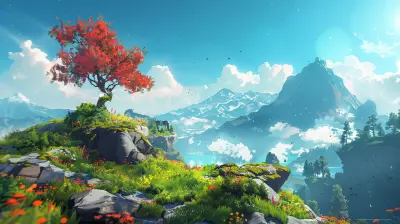
Top Indie Games That Fly Under The Radar
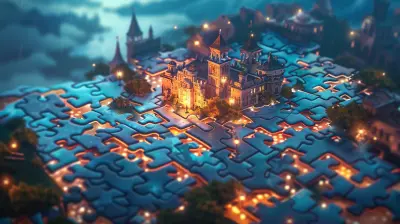
How Indie Games Are Shaping the Future of Puzzle Games
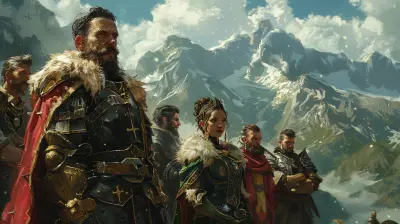
Game Influencers Who Wield More Power Than Critics
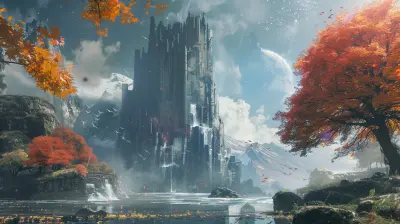
How Environmental Storytelling Is Taking Over Game Design
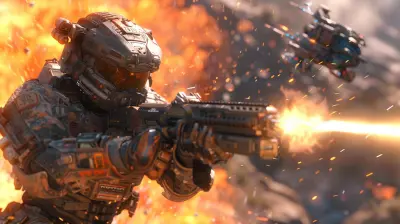
How to Use Grenades and Explosives Effectively in FPS Games
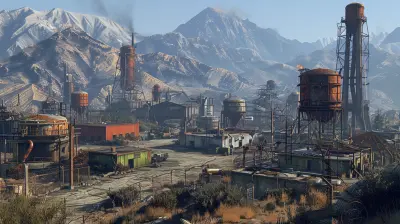
Building the Ultimate Base in Open World Survival